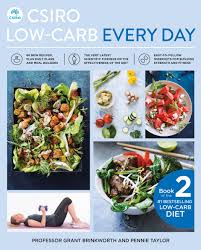 The CSIRO Total Wellbeing Diet was recently developed by the CSIRO – Australia’s national science agency. This is obviously a sign that diets are high interest and big business – the government starts getting into things. And the CSIRO says the program is backed by scientific evidence that proves it works.
The CSIRO Total Wellbeing Diet was recently developed by the CSIRO – Australia’s national science agency. This is obviously a sign that diets are high interest and big business – the government starts getting into things. And the CSIRO says the program is backed by scientific evidence that proves it works.
 The CSIRO diet is low kilojoule, low fat and higher in protein than usual. CSIRO studies showed the diet was beneficial for weight loss and muscle preservation in women who were obese diabetic, non-diabetic or had metabolic disorders, with particular benefits to fat losses around the waist.
The CSIRO diet is low kilojoule, low fat and higher in protein than usual. CSIRO studies showed the diet was beneficial for weight loss and muscle preservation in women who were obese diabetic, non-diabetic or had metabolic disorders, with particular benefits to fat losses around the waist.
The higher protein content of the CSIRO diet makes it feel more filling. It retains all food groups, is well-balanced, but may be hard for people who don’t like fish, chicken or protein foods. The eating plan also contains some low-GI carbohydrates, which can curb hunger.
Roughly, it includes lean or low-fat protein at each meal, encouraging wholegrain breads and cereals, regular meals and never skipping breakfast. Low-fat dairy, lots of fruit and vegetables, and daily exercise are encouraged.
In a 12 week case study of the diet, the CSIRO diet plan had a higher retention rate than a control group, possibly because people felt fuller with the high protein, low-GI ingredients. Improvements in cholesterol levels were also recorded.
The full principles, menu plans and shopping lists are available in the official book, The CSIRO Total Wellbeing Diet, by Dr Manny Noakes and Dr Peter Clifton, released in May 2005 and available from Seekbooks in Australia.
Any negative feedback has been related to the high protein content of the CSIRO diet, and that the CSIROs research was partly funded by the Meat and Livestock Industry in Australia